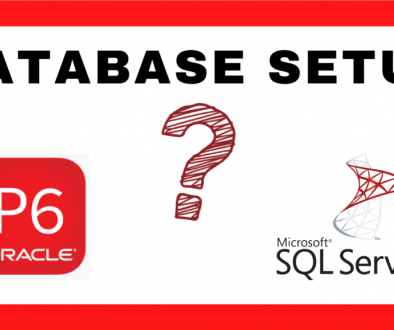Project Baseline
Projects are alive, that is why they are born, grow and die. In Project Management, within the birth phase, we include the Project Baseline. Understanding what Baseline represents and what characteristics it has is key for a good Project Manager to control the project life cycle. As always, we like to recommend the PMBOK Guide Sixth Edition book as support for this article.
What is a Project Baseline?
In Project Management, the Project Baseline is the first schedule that includes the whole scope of the project. It is the initial photo of our project, prior to the start of the works. This scope represents all the work packages and activities that are reflected in the project contract. This will present a series of deliverables, contract milestones, payment milestones and activities related to project management, among others. In Project 2080 we like saying that the Base Line is created with the inputs we have at a given moment in time. Always prior to the beginning of the work to be done during the project life cycle.
The Project Baseline will be the first schedule against which we will compare the progress of our project on a regular basis. That is why the creation of the Baseline is so important since it will be key when it comes to controlling and monitoring our project.
During the execution of the project, due to different changes required through its own nature or from the client’s side, a new Baseline may be approved with new contractual dates. Once the client approves this new Baseline, this will become the new Project Baseline and will be against which we will compare the progress of the project.
Once we are clear about what the Project Baseline is, we will see how to create it, features and advantages.
How to create and show a Project Baseline?
When creating a Baseline, the 9 steps to create a project schedule from scratch we talked about in our post about Project Schedule will be followed. Broadly speaking these would be:
- WBS definition
- To identify activities
- Resource identification and allocation for every single activity
- Bill of Quantities (BOQ)
- To work out activity duration thanks to resource outputs
- Activities relationship in a logic way
- To add constraints if any
- Critical Path Method to find out critical activities
- Histogram analysis based on the project critical path
Project Baseline features
One of the main characteristics is that the Project Baseline Critical Path shows activities with Total Float equal to zero. Therefore, it is not possible within the Critical Path to there be activities with negative Total Float. Regarding the Critical Path, highlight that there will be only one main Critical Path, where all activities´ total float is equal to zero. However, a few subcritical paths will be shown.
It is also important to understand that in a baseline there will be no activities either in progress or completed. In other words, all project activities will start from the date we call Data Date onwards.
Project Baseline ADVANTAGES
Among the advantages that the creation of a Project Baseline brings, we highlight an improvement in the assessment and monitoring of our project. This makes that you do not miss the reference of the work to be done.
Another great advantage of the Project Baseline comes with the Earned Value Analysis as a tracking and monitoring tool. The EVA helps to generate and understand project trends in terms of time and cost. The Project Baseline, as long as the schedule has been cost loaded, helps us in this process. It will give us the breakdown by a period of time of the Planned Value of each of the work packages.
Finally, we will improve the work and resources´ estimates until the end of the project. This is thanks to the trends that the Earned Valued Analysis gives us. In other words, we will have tools to help us channel projects that do not comply with the delivery of contractual milestones.
DISADVANTAGES of not having a Project Baseline
The absence of a Project Baseline will lead to a multitude of problems:
- We will not be able to have a resource estimation to use in the project life cycle. These resources include the engineering team, procurement team, and logistics, among others. But also the materials and machinery to be used are susceptible to be controlled within Project Management. When we have the entire projects portfolio in the same database, not being able to have an estimate of resources can lead to a total lack of control of indirect and direct costs of our projects and our Cash Flow.
- The management of resources can also impact the delay in our project. This is because if we are unable to know when the need for certain resources is expected, such as the segmental tunnel linings for the execution of a tunnel, we will not be able to manage the entire process of design, purchase, and logistics of the material until we reach to the work.
- Change Management is very important in changing projects and exposed to a large number of risks. The absence of an initial baseline prevents us from following up from the beginning of the project. Follow-up regarding the changes that occur and how they impact on the achievement of contractual milestones.
- In Project Planning Management an important point is the periodic reports that talk about the progress of the project. These reports deal with issues such as delays, deliveries, changes, etc. One of the reports is one that compares the real progress with the expected progress until a certain time.
- The dissatisfaction of our client and of all the stakeholders involved in the project. Creating a Project Baseline helps us gain credibility with our client. In addition, it generates confidence since it shows that we know the scope of our project and that we know how we are going to execute it. Therefore, the absence of a Baseline makes us lose all that trust that our client had deposited in us.
IN PROJECT 2080 WE WOULD LIKE YOU TO REMEMBER
We all like to see how we change and evolve throughout our lives. We see photos of when we were born, our first year of life, arrival at 18, etc. A project is like life. We need that first photo with which we will compare our progress, the progress of each of the work packages, the real costs compared to what we had planned before starting work. The Project Baseline will be responsible for representing that first photo with which to compare each period. There are many advantages but the disadvantages that their absence in our project implies are more problematic.
If you are thinking about obtaining the PMP Certification, do not hesitate to take a look at the PMBOK Guide Sixth Edition book to find out much more about Planning and Project Controls.




